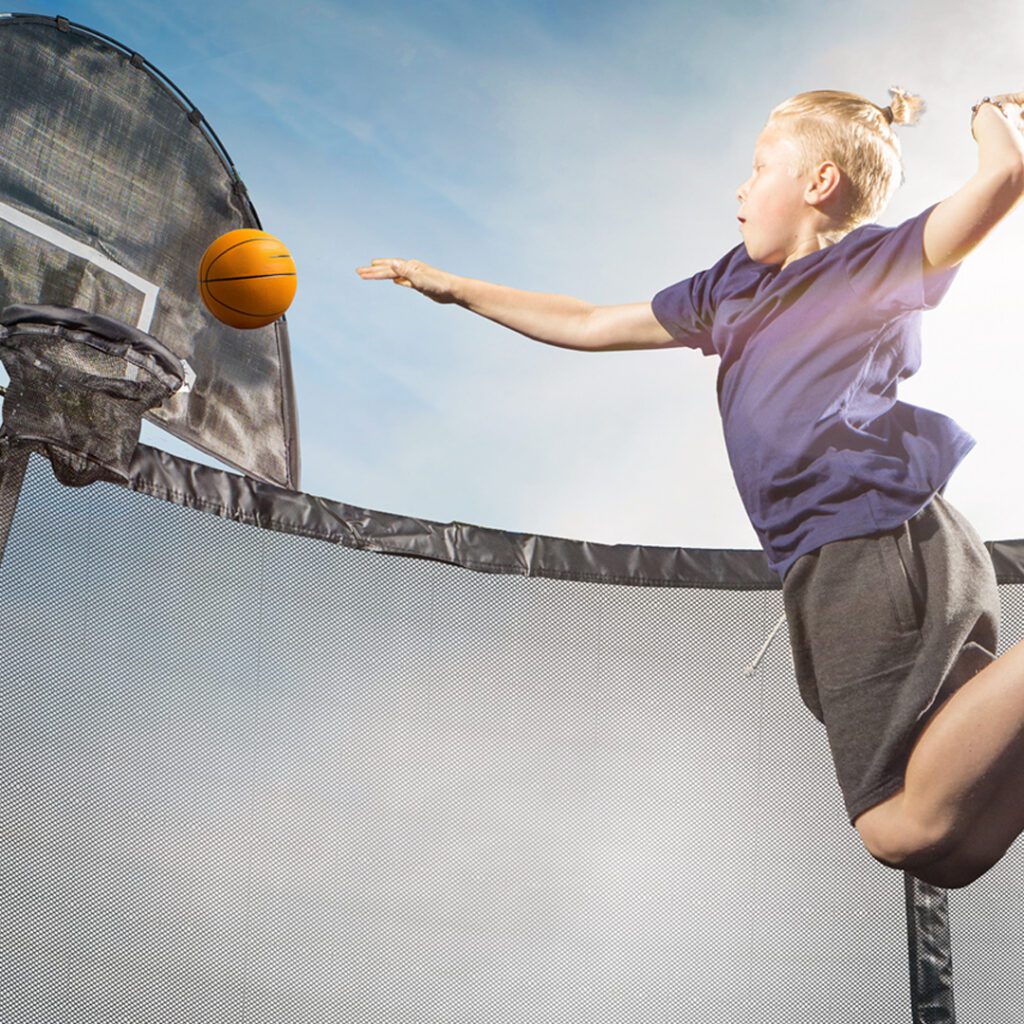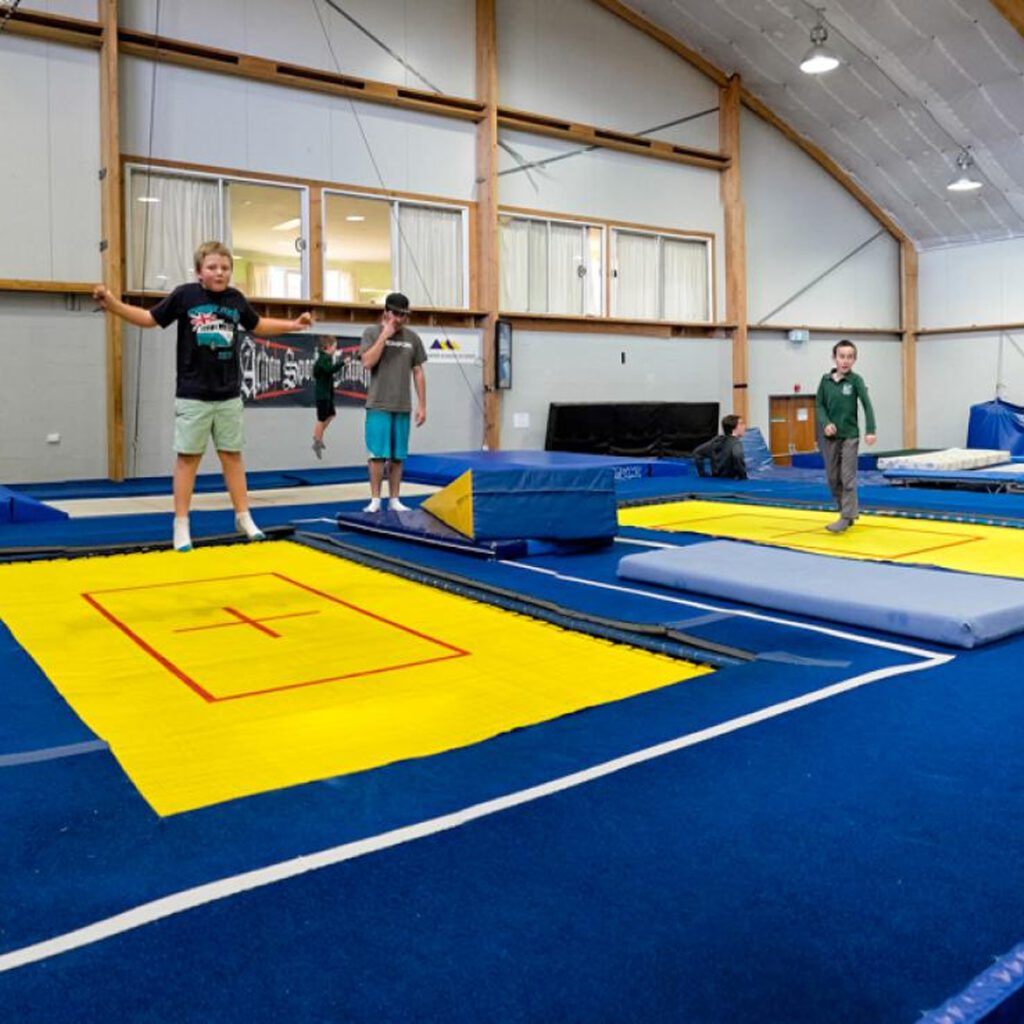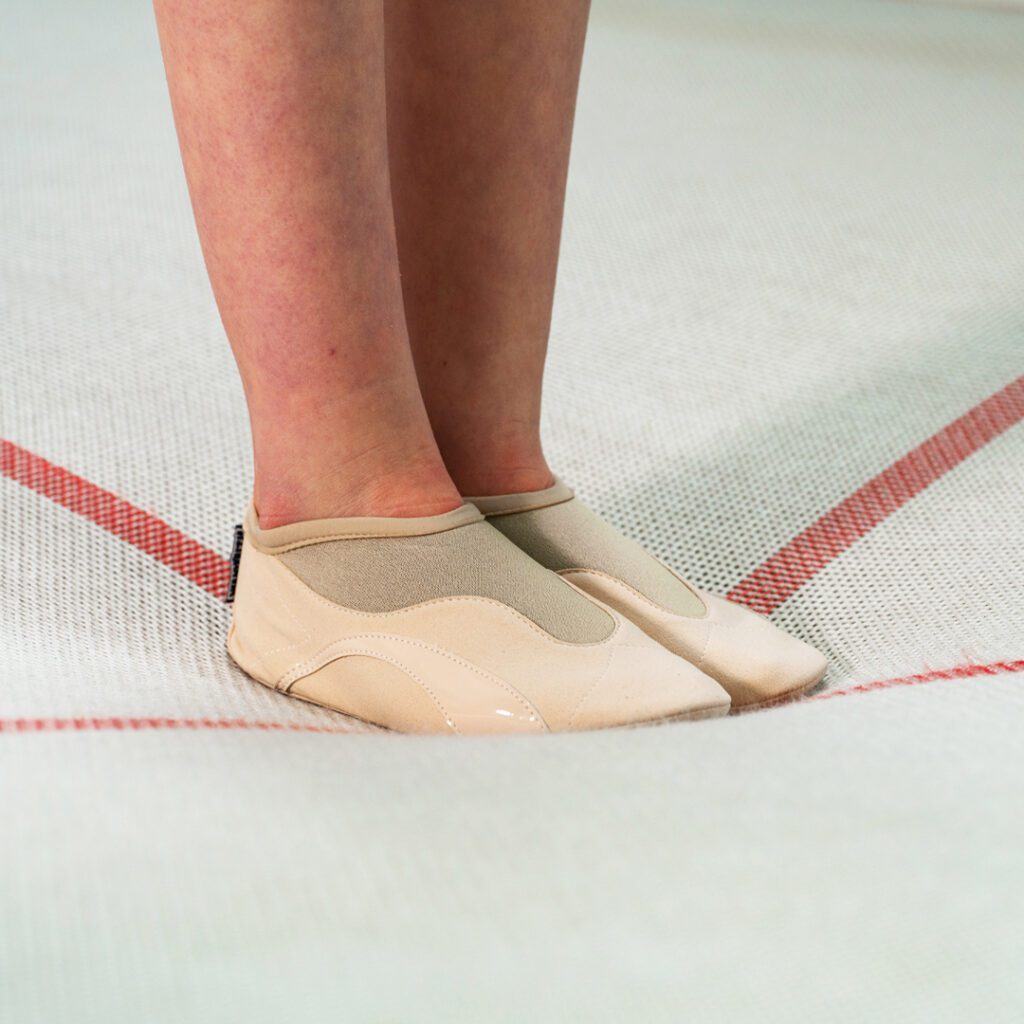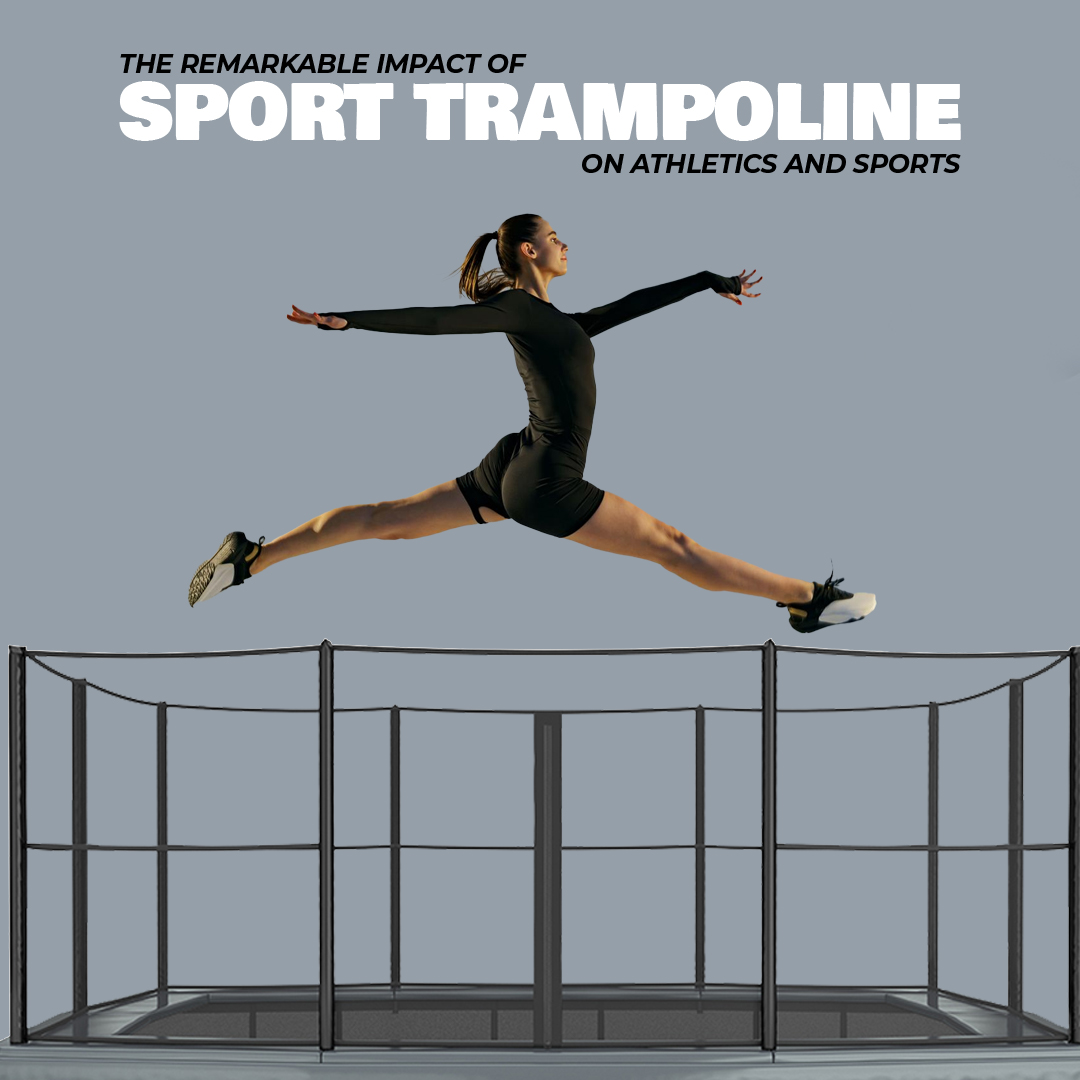
Trampolines are no longer limited to garden playtime. When it comes to training, athletes are always looking for innovative ways to improve their skills. Sport trampolines have emerged as a popular alternative to traditional training methods in various sports.
Athletes from various disciplines are using the power of sport trampoline to enhance their skills and improve their performance. From gymnastics to snowboarding, trampolines are being utilised by athletes looking to boost their strength, balance, and agility.
In this blog, we will be discussing the impacts of sport trampoline on sports and other athletics.
Exploring the five surprising sports that utilise sport trampolines

Sports trampolines have found their way into some unexpected sports, including gymnastics revolutionising the way athletes train and compete. Let’s take a closer look at 5 surprising sports that have incorporated sports trampolines into their training regime:
Basketball
When you think of basketball, trampolines might not be the first thing that comes to mind. However, many basketball players have discovered the benefits of trampoline training for enhancing their jumps and overall athleticism. Trampolines provide an opportunity to practise explosive jumps, improve jump height, and work on aerial manoeuvres. NBA players like Blake Griffin have incorporated trampoline training into their routines to enhance their dunking abilities.
Martial arts
Martial artists rely on agility, reaction time, and quick movements to compete with their opponents. Trampoline training offers a unique way to develop these skills. Martial artists can practise kicks, and punches on the trampoline, improving their agility, balance, and coordination.
Snowboarding
Snowboarding requires a combination of balance, strength, and aerial skills. Trampoline training allows snowboarders to practise tricks, spins, and flips. The bouncy surface of the trampoline mimics the feeling of being in the air, enabling snowboarders to perfect their aerial movements and landings. Many professional snowboarders use trampoline training into their off-season preparations to stay in top form.
Volleyball
Volleyball players need explosive power, agility, and quick reflexes to excel on the court. Trampoline training helps develop these skills by enhancing vertical jump height and improving reaction time. By practising jumps and quick movements on the trampoline, volleyball players can improve their spiking and blocking abilities. Trampoline training also helps strengthen the leg muscles, which are essential for powerful jumps.
Figure skating
Figure skating requires grace, balance, and precise movements. Trampoline training offers a unique way for figure skaters to enhance their jumps and overall performance. By practising jumps and spins on the trampoline, skaters can improve their awareness, timing, and control. Trampoline training also helps strengthen the core muscles, which are crucial for maintaining balance and stability on the ice.
These are just a few examples of the surprising sports that have embraced trampoline training. The versatility and benefits that trampolines bring to these sports have revolutionised the way athletes train and compete.
Sport trampoline training techniques and exercises

Training on a sports trampoline involves more than just mindless bouncing. To maximise the benefits and improve athletic performance, athletes need to incorporate specific techniques and exercises into their trampoline training routine. Here are some key techniques and exercises for sport trampoline training:
- Basic bouncing: Focus on maintaining balance and control while bouncing up and down. Gradually increase the intensity by adding small jumps and variations in movement.
- Jump variations: Incorporate different jump variations to target specific muscle groups and improve explosiveness. Examples include tuck jumps, pike jumps, star jumps, and split jumps. Experiment with different jump styles and timings to challenge yourself and improve your overall athleticism.
- Aerial manoeuvres: Once you’ve mastered the basics, progress to aerial manoeuvres such as flips and twists. Start with simple flips like front flips or backflips and gradually progress to more advanced manoeuvres. It’s important to practise these manoeuvres under the supervision of a trained professional to ensure safety.
- Strength and conditioning exercises: Use the trampoline as a tool for strength and conditioning workouts. The unstable surface of the trampoline adds an extra challenge, engaging more muscles and improving overall strength.
- Agility and reaction drills: Set up agility drills on and around the trampoline to improve quickness, agility, and reaction time. Use cones or markers to create a course and perform various movements such as side shuffles, quick jumps, and direction changes. This will help simulate game-like scenarios and enhance sports-specific skills.
Remember to always warm up before starting any trampoline training session and cool down afterwards. Start with shorter sessions and gradually increase the duration and intensity as your fitness level improves. It’s also essential to maintain proper form and technique to prevent injuries.
Safety precautions and guidelines for sport trampoline training

sport trampolines unique construction offer numerous benefits for athletes, it’s crucial to prioritise safety during training sessions. Here are some safety precautions and guidelines to follow when incorporating sport trampolines into your training routine:
- Proper supervision: Always have a trained professional or coach present during trampoline training sessions, especially when attempting advanced manoeuvres. They can provide guidance, correct techniques, and ensure safety.
- Secure the trampoline: Ensure that the trampoline is properly secured to the ground or equipped with safety enclosures to prevent accidents and falls.
- Use appropriate footwear: Wear trampoline socks with a good grip to prevent slipping on the trampoline surface. Avoid training barefoot, as this can increase the risk of accidents.
- One person at a time: To avoid collisions and accidents, only allow one person to use the trampoline at a time. This reduces the risk of injury and ensures a safe training environment.
- Maintain a clear area: Clear the area around the trampoline of any obstacles or objects that could cause injury. Ensure that there is enough space for safe landing and movement on and off the trampoline.
- Warm-up and cool down: Always warm up before starting a trampoline training session and cool down afterwards. This helps prevent muscle strains and prepares the body for the workout.
- Start with the basics: If you’re new to trampoline training, start with basic exercises and gradually progress to more advanced manoeuvres. Master the fundamentals before attempting complex aerial tricks.
By following these safety precautions and guidelines, you can enjoy the benefits of trampoline training while minimising the risk of injuries.
Sports trampoline equipment and accessories
To make the most out of your sports trampoline training, it’s essential to invest in the right equipment and accessories. Here are some key items to consider:
- Safety enclosures: Safety enclosures are essential to prevent falls and accidents during trampoline training. Ensure that the safety enclosure is securely attached to the trampoline and provides adequate protection.
- Athletic shoes: Invest in a good pair of athletic shoes with excellent grip to prevent slipping on the trampoline surface. Look for shoes specifically designed for indoor sports or cross-training, as they offer stability and support.
- Padding and covers: Consider adding trampoline pads to your trampoline to further enhance safety and protect the springs and frame. These accessories help reduce the risk of injuries and prolong the lifespan of your trampoline.
- Resistance bands: Resistance bands can be used in conjunction with trampoline training to add an extra challenge and target specific muscle groups. They offer a versatile and portable way to enhance strength and conditioning workouts.
- Safety mats: Place safety mats around the trampoline to provide an additional layer of protection in case of falls. These mats help cushion landings and reduce the risk of injuries.
Investing in high-quality equipment and accessories ensures a safe and effective trampoline training experience. It’s important to regularly inspect and maintain your equipment to ensure its longevity and safety.
Benefits of training on sport trampolines
Sports trampolines offer a wide range of benefits for athletes looking to improve their performance. The unique properties of trampolines provide a low-impact training environment that reduces stress on joints while still delivering an intense workout. The following are some key benefits of training on sport trampolines:
- Enhanced cardiovascular fitness: Jumping on a trampoline is a highly effective form of cardiovascular exercise. The constant bouncing engages the entire body, increasing heart rate and improving overall cardiovascular fitness. It’s a fun and enjoyable way to get your heart pumping.
- Improved balance and coordination: Trampolines require constant adjustments to maintain balance and stability. Regular training on a sports trampoline can help improve proprioception and coordination, which are essential skills for many sports.
- Increased leg and core strength: The repetitive jumping motion on a trampoline engages the leg muscles, including the calves, quadriceps, and hamstrings. Additionally, the core muscles are constantly activated to maintain balance and control during jumps. Regular trampoline training helps build strength in these muscle groups.
- Enhanced agility and reaction time: Sport trampolines provide a dynamic surface that forces athletes to react quickly and adjust their movements accordingly. This improves agility and reaction time, skills that are crucial in sports such as basketball, martial arts, and snowboarding.
- Low-impact training: Unlike running or jumping on hard surfaces, trampolines provide a cushioned landing that reduces impact on the joints. This makes it an ideal training tool for athletes recovering from injuries or those looking to minimise stress on their joints while still engaging in a high-intensity workout.
Incorporating sports trampolines into your training routine can help you take your fitness to new heights. Whether you’re a professional athlete or a weekend warrior, the benefits of trampoline training are undeniable.
Conclusion
In conclusion, sport trampolines have had a significant impact on athletics, going beyond their traditional use. Athletes across various sports in the UK, from basketball to figure skating, now utilise these springy surfaces for enhanced strength, balance, and agility. Sport trampoline offers a unique and effective solution for athletes looking to enhance their skills. Whether you’re a professional or an enthusiast, integrating sport trampoline training promises to bring innovation and heightened athleticism to your fitness routine.





